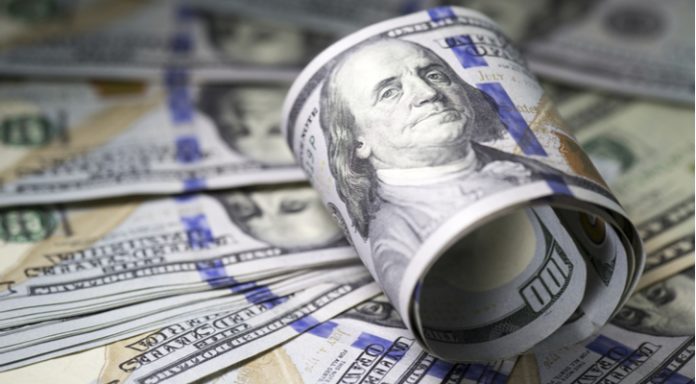The pound took advantage of the weaker dollar on Wednesday and the pound US dollar exchange rate continued to climb higher. The pair hit a peak of US$1.3210, after rallying for 4 of the last 5 sessions.
| What do these figures mean? |
|---|
|
When measuring the value of a pair of currencies, one set equals 1 unit and the other shows the current equivalent. As the market moves, the amount will vary from minute to minute. For example, it could be written: 1 GBP = 1.28934 USD Here, £1 is equivalent to approximately $1.29. This specifically measures the pound’s worth against the dollar. If the US dollar amount increases in this pairing, it’s positive for the pound. Or, if you were looking at it the other way around: 1 USD = 0.77786 GBP In this example, $1 is equivalent to approximately £0.78. This measures the US dollar’s worth versus the British pound. If the sterling number gets larger, it’s good news for the dollar. |
The pound advanced in the previous session as traders digested optimistic comments from EU Chief negotiator Michel Barnier that a Brexit deal was “within reach” next week. The EU claims to have found a solution to the Irish back stop issue, that would avoid a hard customs border between Ireland and Northern Ireland. The EU and the UK continue to work through their differences narrowing them down, giving the market reason to believe a deal is imminent.
| Why is a “soft” Brexit better for sterling than a “hard” Brexit? |
|---|
| A soft Brexit implies anything less than UK’s complete withdrawal from the EU. For example, it could mean the UK retains some form of membership to the European Union single market in exchange for some free movement of people, i.e. immigration. This is considered more positive than a “hard” Brexit, which is a full severance from the EU. The reason “soft” is considered more pound-friendly is because the economic impact would be lower. If there is less negative impact on the economy, foreign investors will continue to invest in the UK. As investment requires local currency, this increased demand for the pound then boosts its value. |
Hope that Britain was on the brink of a Brexit deal enabled investors to look beyond a mixed bag of economic data. Wednesday was the first day of influential economic data releases so far this week and the figures painted a mixed picture. Data showed that increased spending thanks to the summer heatwave and World Cup boosted economic growth in the three months to August. The UK GDP for the three months to August increased an impressive 0.7%, above the 0.6% analysts had forecast. This was the strongest pace of economic growth since 2016. However, the monthly GDP figure painted a much more subdued picture. GDP data month on month in August stalled, missing analysts forecasts of 0.1% growth.
US Inflation Data In Focus
The dollar traded broadly lower versus its peers, taking a breather from its recent rally. Whilst the dollar has been trading lower versus the stronger pound, the mood in general towards the dollar has been strong across the past few weeks. Recent economic data has shown the US economy to be firing on all cylinders which has increased the perception that the Fed will take a more aggressive path to hiking rates.
Today sees the release of US inflation data. Inflation in the US has been running above the Fed’s 2% target. Analysts expect that the cost of living continued to rise in September, predicting inflation to hit 2.3%, up from 2.2% in August. A move higher in inflation is likely to increase investor expectation of a steeper path of interest rate rises by the Fed. This would boost the dollar.
| Why do raised interest rates boost a currency’s value? |
|---|
| Interest rates are key to understanding exchange rate movements. Those who have large sums of money to invest want the highest return on their investments. Higher interest rate environments tend to offer higher yields. So, if the interest rate or at least the interest rate expectation of a country is relatively higher compared to another, then it attracts more foreign capital investment. Large corporations and investors need local currency to invest. More local currency used then boosts the demand of that currency, pushing the value higher. |
This publication is provided for general information purposes only and is not intended to cover every aspect of the topics with which it deals. It is not intended to amount to advice on which you should rely. You must obtain professional or specialist advice before taking, or refraining from, any action on the basis of the content in this publication. The information in this publication does not constitute legal, tax or other professional advice from TransferWise Inc., Currency Live or its affiliates. Prior results do not guarantee a similar outcome. We make no representations, warranties or guarantees, whether express or implied, that the content in the publication is accurate, complete or up to date. Consult our risk warning page for more details.
This article was initially published on TransferWise.com from the same author. The content at Currency Live is the sole opinion of the authors and in no way reflects the views of TransferWise Inc.





